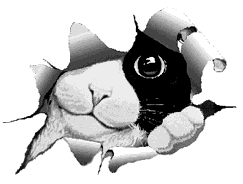
SPHYNX
ORIGIN
In 1966 a domestic cat gave birth to a hairless kitten in Toronto, Canada. It was discovered to be a natural mutation and the Sphynx cat, as we know it today, came into existence. This cat and a few other naturally hairless cats have been found worldwide. These have magically been produced by Mother Nature and are the foundation for this unusual breed. Cat breeders in Europe and North America have bred the Sphynx to normal coated cats and then back to hairless for more than thirty years. The purpose of these selective breedings was to create a genetically sound cat with a large gene pool and hybrid vigor. This is a very robust breed with few health or genetic problems.
ASPECT
The Sphynx is not always totally hairless; there can be a fine down on the body, which makes the cat feel like a warm peach. Some light hair is often present on the nose, tail and toes. They can be registered in a wide variety of cat colors. The color is seen in the pigment of the skin and the few hairs that they do have. The Sphynx is a substantial cat, medium sized and strong, with adult males being larger than adult females. Sphynx have sturdy boning and good muscle development and should have a bit of a belly as if they just finished dinner. They have an open-eyed, intelligent face and a friendly expression
CHARACTER
The Sphynx are extremely inquisitive and love to be the center of attention. They prefer human attention but enjoy the company of dogs and other cats. They have an abundance of energy and mischief and are always with you, on you or showing off for you.
CARE
Because of the lack of hair that would normally absorb body oils, the Sphynx needs to be bathed periodically. This is not a difficult task with a cat that has been accustomed to a bath from kitten hood and it takes no time at all to dry a Sphynx. Some people who suffer from cat allergies can tolerate living with Sphynx cats.